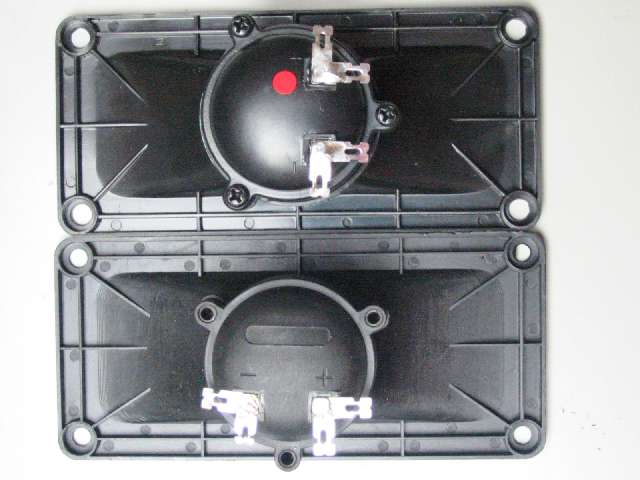Ok,
(Well, actually not so…)
I have replaced the damaged drivers I mentioned in my initial post and checked all the piezos for 'good' (more on that later…)
and equal output and matching polarity and proceeded to saw and glue the arrays.
As the second array was curing, I re-assembled the drivers of the first array and wired them (correctly

).
I then connected them to some music just to hear how the array sounded.
The array sounded real bad! It had this prominent peak at around 4 kHz but everything above that was noticeably weaker

I decided to conduct a basic bench test to compare the response of one of these piezos to a known good one
(a genuine Motorola I had laying around).
I set up the two piezos adjacent to each other in front of an SPL meter and fed them alternatively
through an A-B switch with the same sine signal.
I monitored the output of both at different frequencies from 2 kHz and up.
I noticed the 'No Brand' piezo was about 3 -6 dB behind the Motorola up to around 4 kHz
(the closest the NB got to the Mot. was at 4.5 kHz with just 1.5 dB difference)
From there the NB simply dived and run in the range of 10 up to 30 dB (!! At 10 kHz) lower then the Mot.
The Mot. 'finally' started rolling off at 15 kHz maintaining ±2 dB along its working range.
I was disappointed, though I hadn't expected too much from back street China piezos, I just didn't think they would be SO bad

These NB piezos are definitely no good for (any) serious PA cab even when arrayed. They are junk.
I would recommend to anyone looking for piezos to avoid this 'brand' if possible (before purchasing…)
…And to conduct a response test BEFORE sawing and gluing

This is how they look up close:


As for my 290/280 'piezo project', I am back at square one, looking for decent 1016 piezos…



